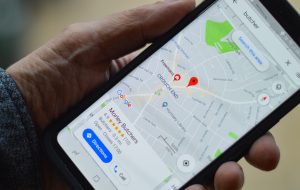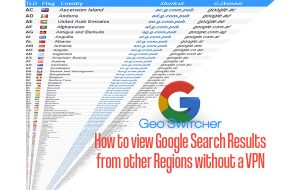Visual Search Optimization: Making Your Brand Visible in Image and Video Searches

In today’s digital age, the way people search for information is constantly evolving. With the rise of visual content consumption, optimizing for image and video searches has become increasingly vital for businesses looking to enhance their online visibility.
Consider this: How often do you find yourself turning to images or videos when searching for products, inspiration, or answers online? The growing reliance on visual search presents a significant opportunity for brands to connect with their target audience in a more engaging and impactful manner.
In this blog post, we’ll look into the increasing importance of visual search optimization and its profound impact on brand visibility. By understanding the significance of optimizing for image and video searches, you’ll be better equipped to elevate your brand’s online presence and drive meaningful engagement with your audience.
Understanding Visual Search Optimization
Visual Search Optimization is a digital marketing strategy that focuses on enhancing a brand’s online visibility by leveraging image and video searches. It involves optimizing visual content to improve search engine rankings and increase brand exposure to potential customers.
What is Visual Search Optimization
Visual Search Optimization refers to the process of optimizing images and videos to enhance a brand’s online visibility. It involves using specific techniques to make visual content easily discoverable by search engines.
The Rise of Visual Search in Digital Marketing
Visual search has emerged as a powerful tool in digital marketing, driven by advancements in artificial intelligence and machine learning. It allows users to conduct searches using images rather than text, providing a more intuitive and seamless search experience.
The Impact of Visual Content on Brand Visibility
Visual content plays a significant role in shaping brand visibility. With the increasing preference for visual information consumption, brands that effectively utilize visual content can capture the attention of their target audience and stand out in the crowded digital landscape. The strategic implementation of visual search optimization can significantly enhance a brand’s online presence and visibility in image and video searches.
Key Strategies for Image Search Optimization
When it comes to optimizing for image search, it’s crucial to employ various strategies to enhance visibility and attract potential customers. From creating high-quality visual content to utilizing structured data markup, implementing these key strategies can significantly impact your brand’s presence in image and video searches.
Creating High-Quality and Relevant Visual Content
The foundation of image search optimization lies in creating compelling and relevant visual content that aligns with your brand and resonates with your target audience. High-quality images and videos not only capture attention but also contribute to a positive user experience, ultimately boosting engagement and conversions.
Implementing Descriptive Alt Text and Image Titles
Incorporating descriptive alt text and image titles is essential for search engines to understand the context and relevance of your visual content. By accurately describing images using keywords and relevant phrases, you can improve the discoverability of your visual assets in search results, making them more accessible to potential visitors.
Leveraging Structured Data Markup for Images
Structuring your visual content with schema markup can provide search engines with valuable information about the subject, location, and other details related to your images and videos. This structured data markup not only enhances the presentation of your content in search results but also increases the likelihood of appearing in rich image and video snippets, attracting more clicks and traffic.
Optimizing Image File Names and Formats
Optimizing image file names and formats involves using descriptive and keyword-rich file names that accurately reflect the content of the image. Additionally, choosing the right image formats, such as JPEG or PNG, can impact loading speeds and overall user experience, contributing to better search rankings and reduced bounce rates.
Utilizing Image Sitemaps for Enhanced Indexing
Creating and submitting image sitemaps to search engines allows for better indexing and crawling of your visual content. By providing specific details about the images on your website, you can ensure that search engines recognize and display them in relevant image and video search results, ultimately driving more organic traffic to your site.
By implementing these key strategies for image search optimization, you can elevate your brand’s visibility in visual search results, attract a broader audience, and ultimately enhance your online presence.
Enhancing Visibility in Video Searches
Nowadays, with the proliferation of video content, ensuring your brand’s visibility in video searches is more critical than ever. By implementing the following strategies, you can enhance your brand’s presence and visibility in video search results.
Optimizing Video Metadata and Descriptions
When it comes to enriching your brand’s visibility in video searches, optimizing video metadata and descriptions is paramount. Metadata, including titles, location, tags and descriptions, plays a pivotal role in search engine algorithms. In particular Youtube’s location setting is very impactful when it comes to “{product} in {location}” search queries. Craft compelling and relevant titles and descriptions using keywords that are likely to be searched by your target audience. Additionally, ensure that your video file names are descriptive and contain relevant keywords to boost visibility in search results.
Leveraging Video Transcripts for Search Relevance
Leveraging video transcripts can significantly enhance the search relevance of your videos. Transcripts not only make your video content accessible to a wider audience, including those with hearing impairments, but they also provide search engines with textual content to index, thereby improving the discoverability of your videos. By incorporating targeted keywords into your video transcripts, you can further optimize your videos for search visibility.
Utilizing Rich Video Snippets for SERP Presence
To elevate your brand’s visibility in video searches, harness the power of rich video snippets. By implementing schema markup, you can provide search engines with additional information about your videos, such as thumbnail images, duration, and publication date. This enriched data can lead to the generation of visually engaging snippets in search engine results pages (SERPs), thereby increasing the visibility and click-through rate of your video content.
By proactively optimizing video metadata, leveraging transcripts, and utilizing rich video snippets, your brand can solidify its presence and visibility in video searches, ultimately reaching and engaging a broader audience base.
Measuring and Tracking Visual Search Performance
In today’s digital landscape, understanding and measuring the performance of your visual search optimization efforts is crucial for determining your brand’s visibility in image and video searches.
Key Performance Indicators for Visual Search Optimization
When evaluating the effectiveness of your visual search optimization, there are several key performance indicators (KPIs) to consider. These KPIs may include click-through rates on visual search results, image or video engagement metrics, such as view duration or interaction rates, as well as conversion rates resulting from visual search traffic. By tracking these KPIs, you can gain valuable insights into the impact of your visual content on audience engagement and conversion outcomes.
Utilizing Analytics Tools for Image and Video Search Insights
In order to effectively measure and track visual search performance, utilizing robust analytics tools specifically designed for image and video searches is essential. Platforms such as Google Analytics, Pinterest Analytics, and social media insights tools provide valuable data on visual search behavior, allowing you to analyze factors such as user demographics, popular search queries, and the performance of your visual content across different digital channels.
By leveraging these analytics tools, you can gain actionable insights into the effectiveness of your visual search optimization strategies and identify areas for improvement. Understanding the behavior of your audience in image and video searches can enable you to refine your visual content and enhance its visibility, ultimately driving greater brand impact and engagement in visual search results.
Incorporating these measurement and tracking practices into your visual search optimization efforts will not only provide valuable data-driven insights but also empower you to make informed decisions to enhance your brand’s visibility in image and video searches.
Staying Ahead in Visual Search Trends
Visual search is rapidly evolving in the digital landscape, offering businesses new opportunities to enhance brand visibility and engage with tech-savvy consumers. By staying ahead of visual search trends, brands can position themselves for sustained success in the ever-changing online marketplace.
Adopting AI and Visual Recognition Technologies
To stay ahead in visual search, brands must embrace artificial intelligence (AI) and visual recognition technologies. These advancements enable search engines and platforms to understand the content of images and videos, leading to more accurate and relevant search results. By leveraging AI-powered visual recognition, brands can ensure that their products and visual content are effectively indexed and displayed in search results, enhancing their visibility to potential customers.
Integrating Visual Search Capabilities in E-Commerce Platforms
E-commerce platforms are increasingly integrating visual search capabilities to improve the shopping experience for users. By enabling customers to search for products using images rather than keywords, businesses can enhance user engagement and streamline the path to purchase. By integrating visual search features into their e-commerce platforms, brands can cater to the growing demand for visual-based shopping experiences, staying ahead of the curve in the competitive e-commerce landscape.
The Future of Visual Search and Brand Visibility
Looking ahead, visual search is poised to play a pivotal role in shaping the future of brand visibility. As technology continues to advance, visual search will become more sophisticated, offering users seamless and intuitive ways to discover and interact with visual content. For brands, this means an increased emphasis on optimizing visual assets for search, creating compelling visual experiences, and adapting to evolving consumer behaviors. By proactively adapting to the future of visual search, brands can solidify their online presence and maintain relevance in the dynamic digital ecosystem.
In a fast-paced digital environment, staying ahead in visual search trends is crucial for brands aiming to enhance their online visibility and connect with modern consumers.
Takeaways
In today’s digital landscape, visual search optimization plays a pivotal role in bolstering brand visibility. By embracing image and video search strategies, brands can tap into a wealth of untapped potential, reaching audiences in new and engaging ways. The significance of visual search optimization cannot be overstated, as it allows brands to connect with consumers on a deeper, more intuitive level, driving engagement and ultimately, conversions.
By implementing the outlined strategies, brands can position themselves at the forefront of visual search results, standing out amidst the sea of competitors. Embracing this forward-thinking approach is not just a trend, but a necessity in the evolving digital sphere. So, seize the opportunity, harness the power of visual search, and elevate your brand’s visibility to new heights. The time to optimize for visual search is now.











